Get inspired by our expert advice on vegetable gardening for beginners and you'll soon be hooked. There's something so satisfying about growing your produce. It tastes better, it's fresher, plus the feelgood factor of planting and picking your own crops is unrivaled
There's more good news - growing your own is easier than you think. The trick is to grow small amounts of different vegetable varieties that offer big rewards such as cut-and-come-again salad leaves, chilies, leafy greens like spinach and chard, and tomatoes.
If you want to start growing vegetables but think your garden is too small, think again. There are lots of clever new planting options that can really help you make the most of your available space.
Take inspiration from our expert gardening tips for beginners to know what and where to plant, along with our pick of some of the best ideas for any garden space, whether it's a small city plot or sprawling backyard.
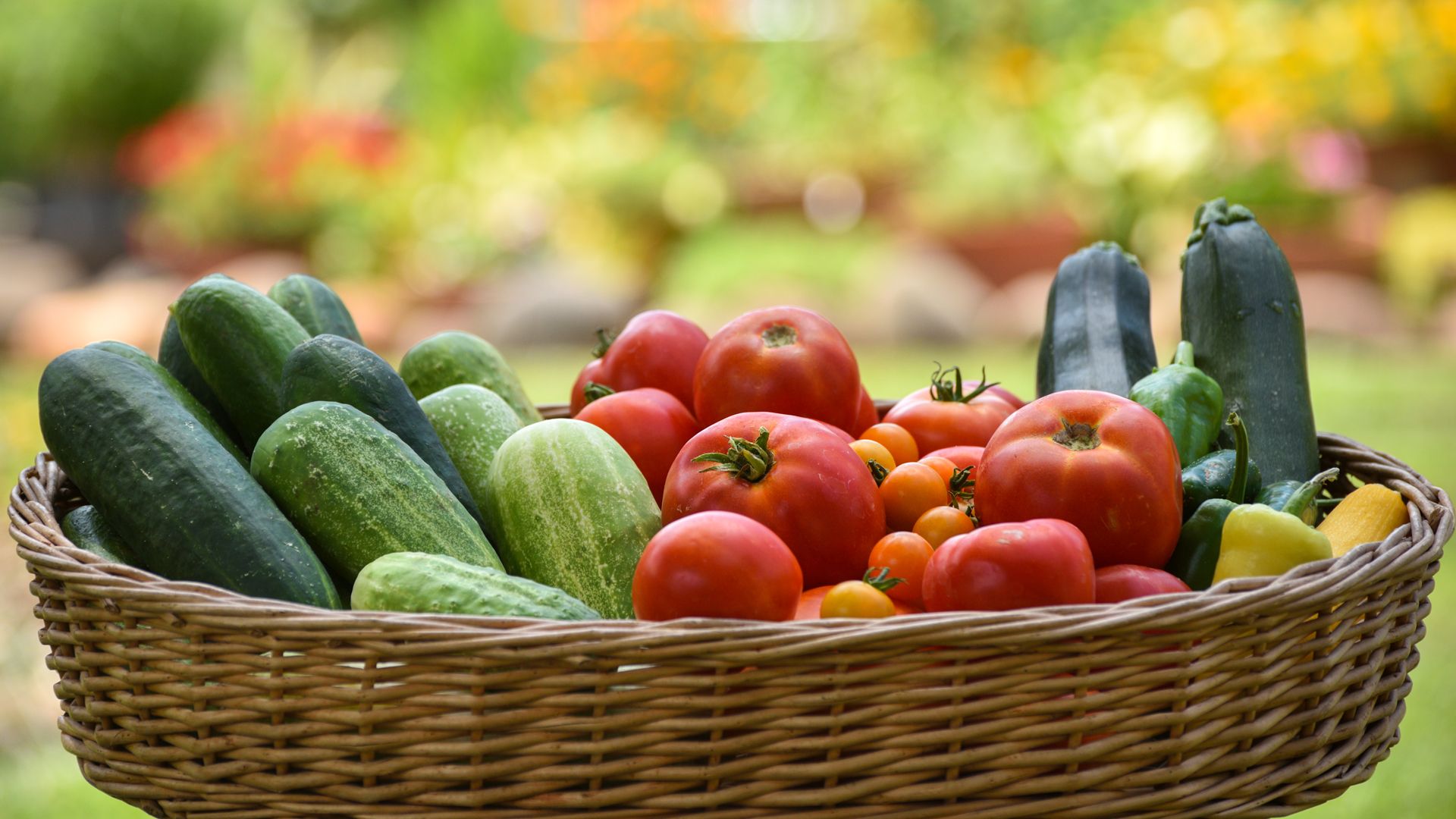
(Image credit: Getty Images | Barbara Rich )
How to start your first vegetable garden - a beginner's guide
Start your first vegetable gardening with careful planning. How much space you decide to devote to it will vary according to your household, but as a guideline aim to give 60-70% of the space to staple vegetables you buy every week and eat most days.
Next, decide whether you are going to grow your vegetables from seed or buy plug plants online or at the garden center or nursery. If you decide to grow seeds you will need to start sowing them in early spring either indoors or outside under cover in a greenhouse. So work out if you have the space to do this.
Make sure you have a good supply of seeds, seed potting compost, and seed trays, or get your plug plants ordered early. Each seed variety will have a suggested planting guideline, to indicate the distance for spacing and depth of planting into the soil. So always check the back of the packet for the best results when planting.
Remember the optimum germination for seeds is not too hot and not too cold, so check your weather report before you start. Some seeds (again check the packet) need to be started off inside, so a windowsill is perfect.
"To make it easy for yourself, keep your vegetable garden simple," advises garden designer Lucy Conochie (opens in new tab). "To add structure and prevent it from appearing messy, rectangular beds made from timber are a great solution for beginners."
Here are our top tips to get started:
1. Plan your seeds and crop carefully
Grab a pen and paper and plan carefully. What vegetables do you like to eat? Make a list of your favorites, and check if they fall into our 'easy to grow' category.
Once you’ve decided what you want to grow, it’s time to work out how to fit it into your space. Remember that most vegetables grow well in containers and some like tumbling tomatoes thrive in hanging baskets too.
"How you arrange your vegetable garden is dependent upon how much space you have available," says Angela Slater, Gardening Expert at Hayes Garden World (opens in new tab). "The ideal would be to practice a 5-year crop rotation. This prevents the build-up of pests and diseases which attack a particular crop. A crop of legumes (peas and beans) puts nitrogen into the soil so needs to be followed by a leafy crop, such as cabbages, chard, spinach, or kale, which all need nitrogen."
"You need to be able to access the plot easily, so have paths or some space around each border so that you can work easily and perhaps have room for a wheelbarrow," advises Fi Boyle MSGD, Founder of Fi Boyle Garden Landscape Design & Consultancy (opens in new tab).
"Raised beds make working on the bed easier as the levels are higher than on the ground. They also help to keep out competing weeds from paths. It is important that your vegetable garden is also a beautiful space and should feel like somewhere in the garden where you want to spend your time."

(Image credit: Future | Tim Young)
2. Prepare your soil
The single most important factor is building up organically rich, healthy soil, whether in flower beds, containers, or raised beds to ensure it has all the right nutrients ideal for growing vegetables.
Optimum soil is a good mixture of your garden's soil, compost from a garden center, or a compost improver such as manure to ensure it is nutrient rich. Use a fork to turn the soil over to mix it thoroughly so every inch is ready to provide for your plants.
"Makes sure that the soil is dug over to a spades depth and all weed and other root material is removed," advises Fi. "Dig in compost as organic material helps sandy soils to retain water and improves clay soils by giving it a lighter consistency to prevent water logging. It will also provide valuable nutrients to your hungry plants."
It is often recommended to use seedling compost which is lighter but for a great budget alternative, we suggest sieving the soil you have to thin it out.
3. Create a schedule for planting
Different vegetables will thrive and crop at different times of the calendar year, there's always something to plant but it will vary depending on the time of year. Summer is generally the busiest time for planting and cropping vegetables but the autumn months are ideal for crops that need cooler weather such as onions and garlic.
Whatever you go to choose to plant, the rules will all be the same. "Make sure you read the back of each packet of seed for details about when and how to sow seeds," advises Fi. "Keep in mind advice is countrywide so be guided by fellow local growers."
"Remember to label your rows so you know what you have planted. If using seedlings or plug plants, be guided by the advice of the company you have got them from. Plug plants and seedlings often need to be hardened off before being planted out. Allow enough space for your seedlings and plug plants to grow to their ultimate size."
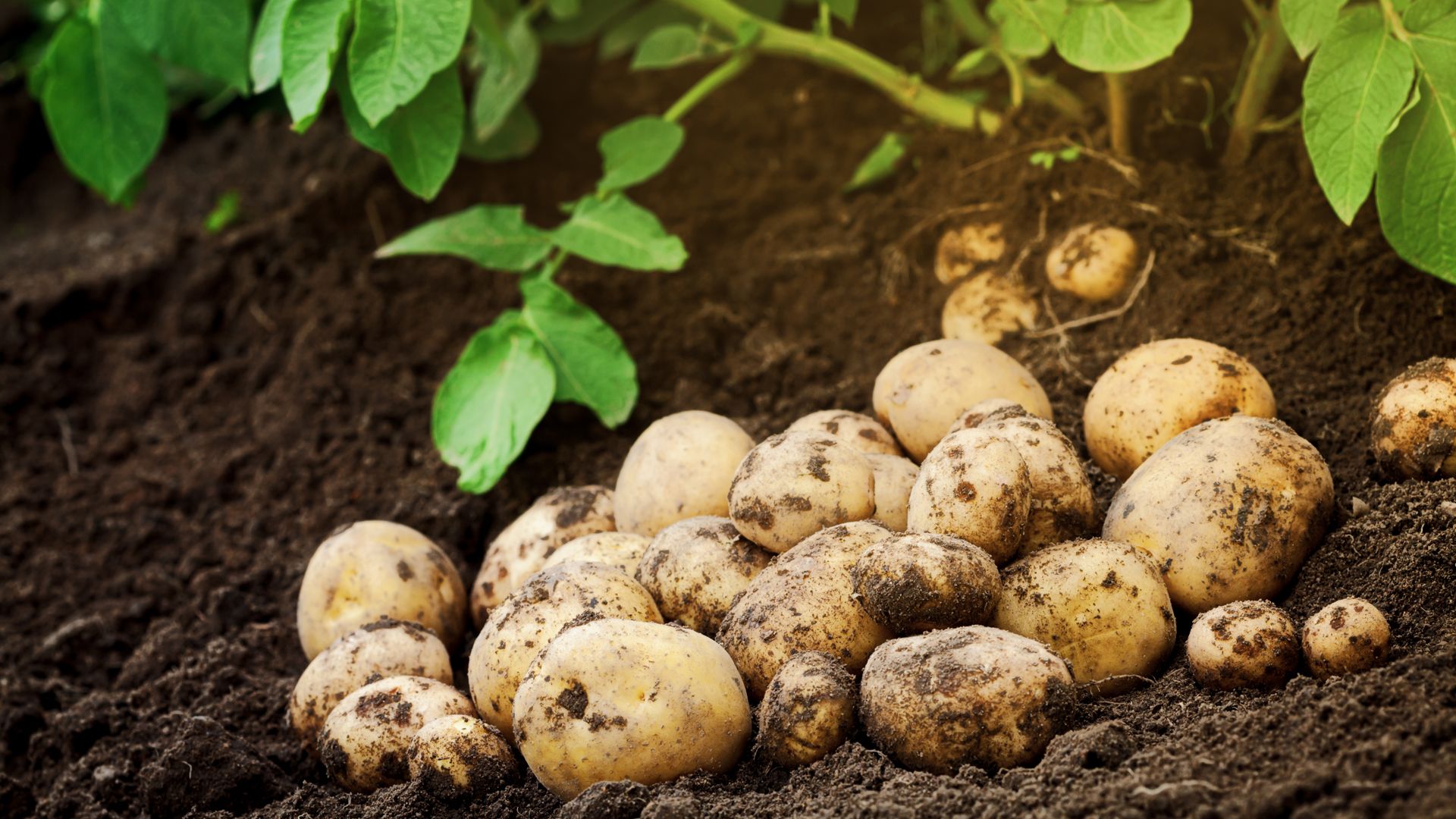
(Image credit: Getty Images | Julia Sudnitskaya)
4. Select crops that are good for beginners to grow
When you're first starting out, you can be tempted to grow all the vegetables you've ever seen but sticking to the top performers will reap the most rewards – like when choosing your best garden plants.
"I would start with potatoes, courgettes, and runner beans which are all fairly straightforward and will crop throughout the summer," advises Fi. Most importantly Fi adds, "make sure you grow something that you actually like to eat."
"Since starting to grow my own vegetables, it's become clear which are easy, generous performers," says plant expert Sarah Raven (opens in new tab), "and which take up too much time and space to really earn their keep."
Salads and herbs are Sarah's favorite crops, while cabbages, maincrop potatoes, and parsnips are ones to grow occasionally. "They have to be in the ground for ages, and there's not much difference in taste whether bought or home-grown," she says. "Remember that vegetable gardening for beginners means saving your energy and space for quick, easy producers."
"Courgettes are a great beginner’s crop as they don’t need any maintenance," explains Angela. "Just sow the seed, keep them well-watered and wait for the crop. Keep picking to encourage them to keep on producing. The only downside is that they need a large space, at least 6ft all around.
"Beetroot is a good beginners crop, only needing minimal maintenance. Sow sparsely and thin to 3-4 inches apart. If space is limited, or you are growing in containers, try baby beets. Rainbow beets are worth growing as they are not normally available in the supermarket."
Angela adds, "If you only have a small plot, steer clear of the vegetables which take a lot of space such as cauliflowers, cabbages, and brussels sprouts."
5. Grow easy-maintenance climbing plants
"To maximize space, runner beans can be grown up a wigwam of canes with a footprint of 30 inches in diameter and you will get a huge crop just off this small area," explains Angela. "Once they start growing, all you need do is pick them regularly to make sure they keep on cropping. They are maintenance-free - all they need is to be kept well-watered."
Angela also explains, "peas, mangetout, and sugar snap peas are all easy to grow and don’t need any maintenance, just regular watering. They have a small footprint as they grow vertically so can be grown at the back of the plot behind other vegetables. They are expensive to buy so well worth finding a little space for them."
"Vegetables need space and light so you should think about the height and spread of each plant," suggests Fi. "Tall plants like sweetcorn or runner beans will provide shade so you want to avoid growing other plants that need lots of light on the shady side of these plants."
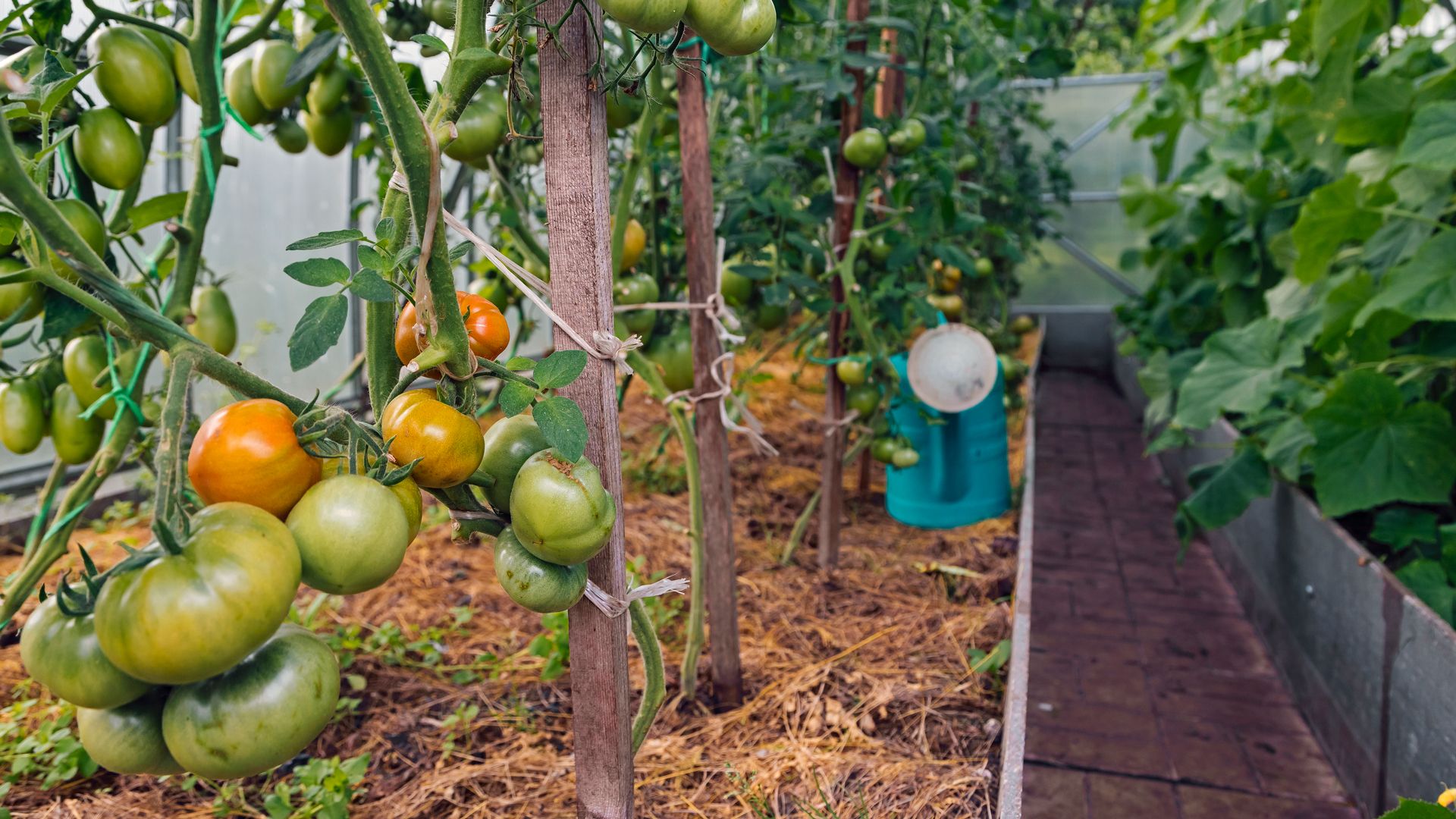
(Image credit: Getty Images | Westend61)
6. Research the best pairings
Working out which vegetables to plant together is key to a thriving veggie plot. There are four groups of vegetable types: legumes (such as runner beans, and peas), leafy greens (spinach, kale), roots (potatoes, garlic), and fruit-bearing (tomatoes, courgettes). The rule is that no member of any group should follow another in the same group on the same piece of ground, which is known as crop rotation. But you don’t need to worry about this if you’re opting to grow your vegetables in containers.
"Beans and members of the onion family don’t do well together; however, beans do like growing with carrots," explains Angela. "Aubergine and fennel don’t do well together as the fennel produces a chemical which inhibits aubergine growth."
"Don’t grow cucumbers next to pungent herbs as they can take on some of these flavors. It is always best to give each vegetable species as much of their own space as possible to give them the best chance of assessing as many nutrients as possible."
What you plant together can aid the growing journey of each plant. For example, "growing basil underneath tomatoes is said to enhance the flavor of tomatoes," explains Angela.
"Lettuce and radish are both said to benefit from growing with tomatoes so underplant your glasshouse tomatoes and make use of this space-just remember they will need more water. Lettuce and radish are both quick-growing so you should be able to get several crops over the length of time it takes for the tomatoes to ripen."
"Corn, beans, and squash, known as the 3 sisters, have long been grown together by indigenous peoples of North America," says Angela. "Plant the corn first and wait until the stalks have become firm enough to support the beans, then plant the beans close to the corn stalk. Once the beans have grown a few inches, sow the squash in the spaces between. They cover the ground, shading out weeds which compete for nutrients, and keep the soil cool reducing evaporation which decreases watering and keeps the soil damp for longer."
"Lettuce and beetroot have roots at different depths," making them ideal to plant together suggest Angela. Explaining why she says, "lettuce is shallowly rooted whereas beetroot is much deeper, so they are not competing for the same nutrients. The lettuce covers the bare soil so keeping it cool for the beets and shading out competing weeds."
Getting your pairings correct is important, so it's recommended that you research your specific seeds before deciding where to plant them.
8. Working in a contained space? Opt for easy raised vegetable beds
Raised garden beds and planter boxes are the ideal solutions if you want to start growing your own vegetables in a contained space.
The most popular material for raised bed vegetable gardening for beginners are railway sleepers (also known as railroad ties), which are widely available. Search online for your nearest supplier. These are economical to buy and the width of the sleepers means that you can have raised vegetable beds you can sit on as you tend to your crops.
When thinking about your design make sure there is a comfortable amount of space between the beds, and they are lined with a permeable membrane on the inside that will extend the life of the sleepers.
"When designing vegetable gardens, we always prefer to have the borders raised," says Penelope Walker of Llevelo Garden Design (opens in new tab). "It makes for a much more interesting space. It's usually easier to manage too."
James Scott of The Garden Co (opens in new tab), agrees. "Installing raised beds to grow your own fruit and vegetables offers a number of advantages, from practical considerations such as they offer a longer growing season and less backache, to the aesthetic - they look good too," he adds.
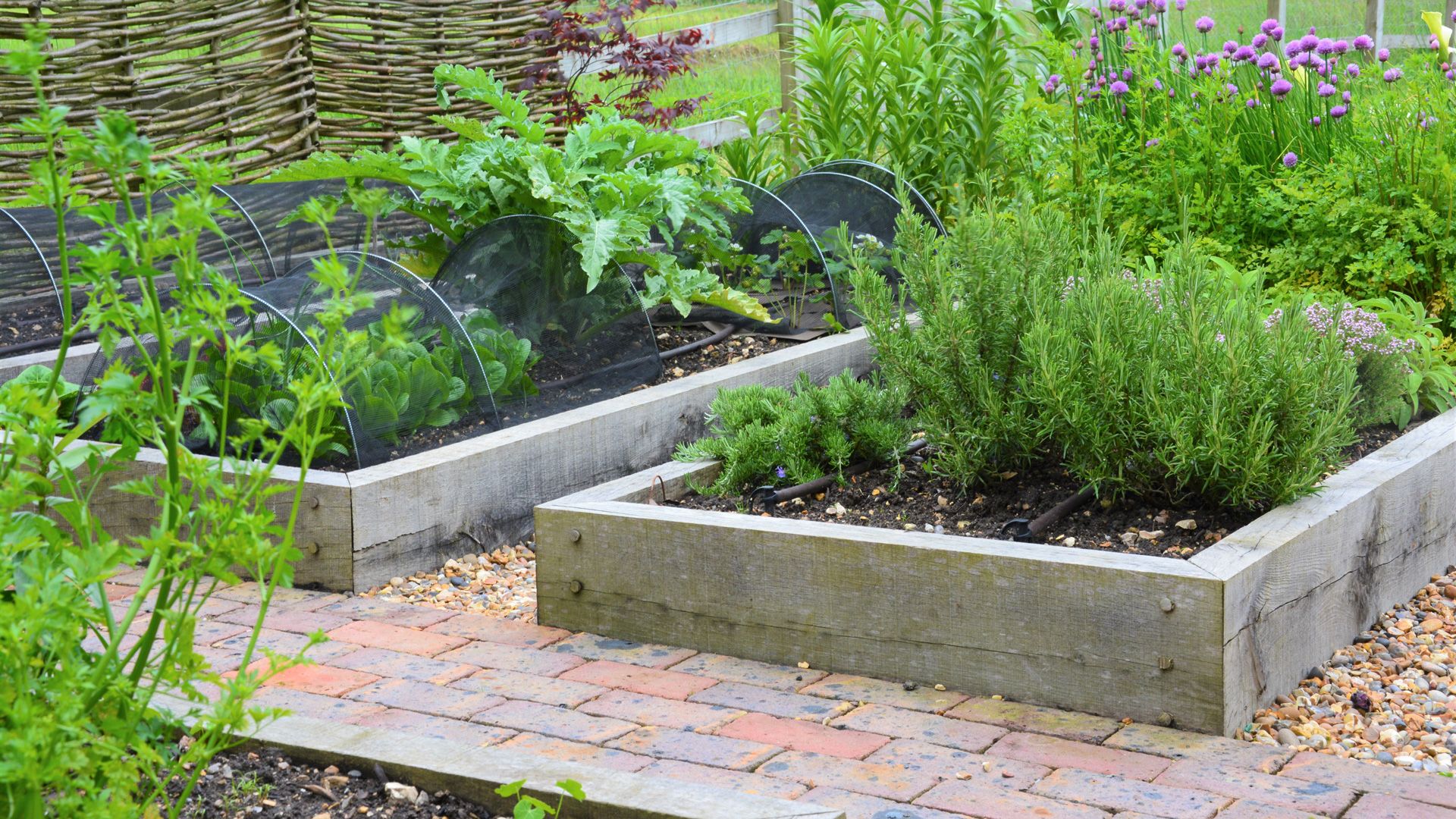
(Image credit: James Scott/The Garden Co)
9. Water and mulch
Whatever you choose to grow, in whatever manner the fundamental care and maintenance are the same – good watering is key, especially during dry spells. A good vegetable liquid feed that can be added to your water can once a week will aid with a bumper crop.
Mulching is a great way to add nutrients and also stop weeds by adding a layer of organic matter to the surface of the soil. Covering the soil with any protective material that blocks the sunlight will prevent weeds from growing in your vegetable patch and help to warm the soil to get it ready for the months ahead for planting. Warm soil means you may be able to plant your seedlings earlier, as warmth is key for germination.
How to grow vegetables in containers
If you're not keen on the idea of digging up your precious flower borders to add uniform rows of vegetables why not choose containers for growing your crops? Grouping together a selection of pots and containers gives you the opportunity to grow your own vegetables if outdoor space is limited. Whether it’s a patio, small balcony, or roof terrace, a few prized pots are all you need to create a growing space.
Choose lightweight containers and they will be easy to move around, in and out of the sun, or out of the way of potential pests and insects, especially during the hot summer months. They also provide a growing environment where vegetables will thrive.
"Pots and containers provide excellent drainage for plants, as they allow the soil and roots to absorb as much water as they need while the excess is drained away," says Patty Williams at Elho (opens in new tab). "This keeps plants happy and hydrated while reducing the risk of disease. It also allows you to control the condition in which your plants grow. If plants start to struggle with insects or poor soil quality, it’s easy to swap out the soil and create a better environment for plants to flourish."
What should you not plant near tomatoes?
Growing tomatoes is a good first plant to try but there are key growing rules to abide by to ensure a bountiful crop of ripe red tomatoes. "Tomatoes don’t grow well with other vegetables as they are very greedy feeders and will rob other plants of nutrients," explains Angela. "Lettuce can be grown under tomatoes as they only have shallow roots and don’t compete directly."
"Avoid planting any of the brassica family near tomatoes as they can inhibit their growth," warns Fi. "These are plants such as broccoli, cabbage, cauliflower, and kale."
What flowers attract pollinators?
Plant a selection of mixed flowers with your produce and you will soon reap the benefits. Bees will flock to the garden to help pollinate your vegetables, and the flowers will also add a pop of color.
To find out the best flowers to attract bees, we asked Sarah Hancocks of garden wildlife experts Vivara UK (opens in new tab) to pick her favorites. "Some of the best flowers to look out for include foxgloves, poppies, cornflowers, sweet peas, larkspur, mallow, and nasturtium, all of which are brimming with nectar for bees to enjoy. We recommend mixing different varieties together to get a lovely natural look."
The best salad leaves to grow for beginners
When it comes to vegetable gardening for beginners the must-haves are cut-and-come-again salad leaves. You harvest the leaves, leaving the rest of the plant to continue to grow. With the right varieties, you can have a seamless supply.
"There's a huge range so the best way to get to know what you like is to experiment," says Sarah Raven. "Some of my favorites include Lettuce 'Salad Bowl', as well as 'Merveille de Quatre Saisons' lettuce for a splash of red in the bowl, and two punchy, heat-tolerant salad leaves, 'Red Frills' Mustard which tastes of new potatoes, and 'Golden Streaks' Mustard with a strong, horseradish flavor."
With five plants of each, within six weeks you'll be able to pick salad almost every day. "If you harvest the outside leaves regularly and the central growth once a fortnight to prevent it flowering, they should go on growing and producing more leaves for about 10 weeks, some even longer," says Sarah.
"Micro vegetable leaves and salad leaves are simple to grow on a sunny warm windowsill at any time of the year and they need not cost very much," says Angela. "For seed trays, use the plastic punnets you buy fruit in from the supermarket, make holes in the bottom, fill with compost and sow a few seeds on the surface then cover with a very thin layer of compost. Stand the tray in water for about 10 minutes then drain. Keep warm, light, and just damp- if they become cold and too wet the seedlings will rot."
"Radish is easy and quick to grow," Angela adds. "Sow in lines either in the ground or a container. Sow just a few seeds at 3-week intervals from the end of April to August for succession over the summer."
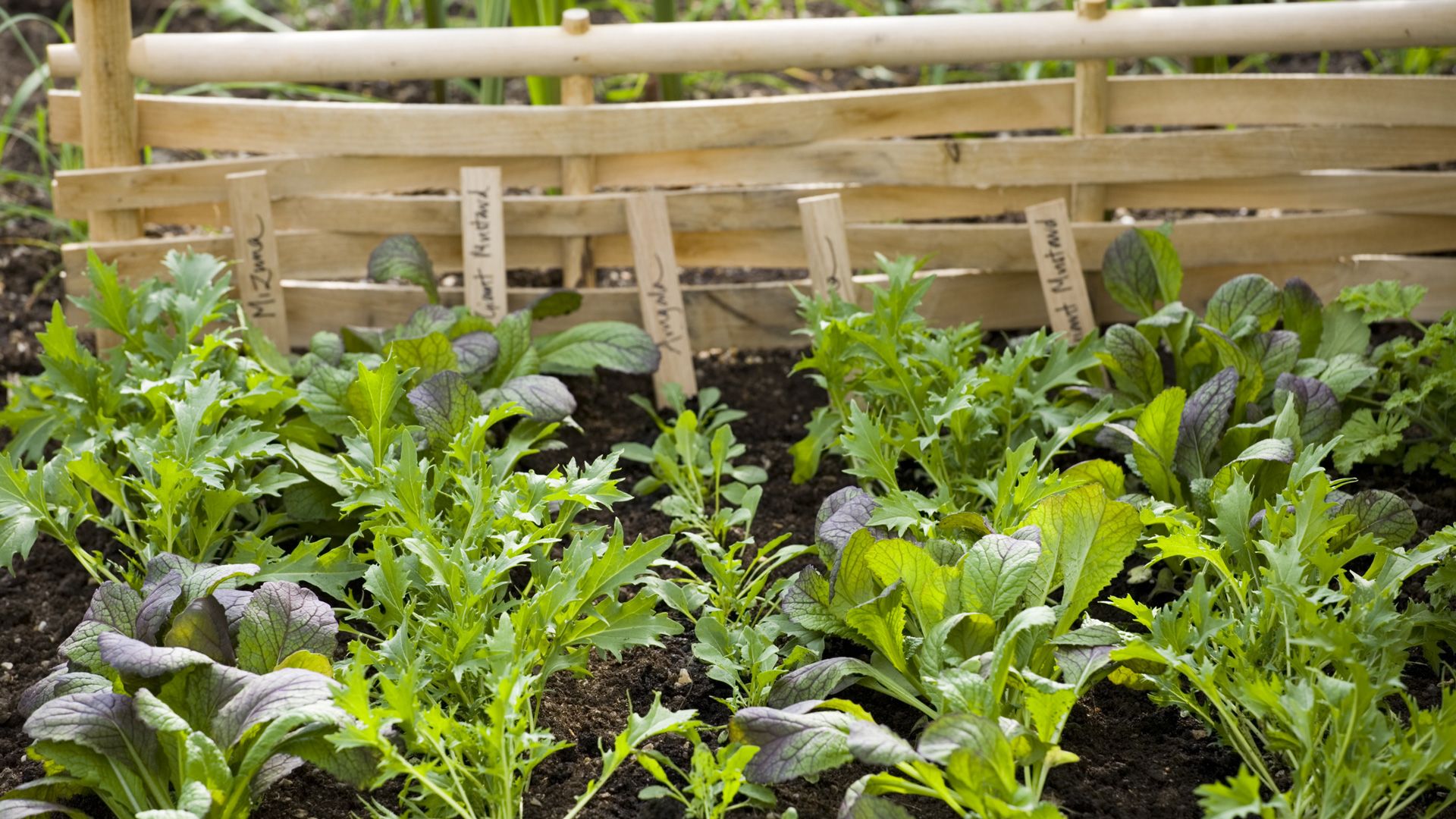
(Image credit: Jonathan Buckley/Sarah Raven)
"vegetable" - Google News
August 28, 2022 at 02:00PM
https://ift.tt/Q1my5GT
Vegetable gardening for beginners: how to grow your own veg - Woman & Home
"vegetable" - Google News
https://ift.tt/bxPawUM
https://ift.tt/RbLiAzC
Bagikan Berita Ini














0 Response to "Vegetable gardening for beginners: how to grow your own veg - Woman & Home"
Post a Comment